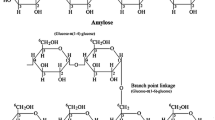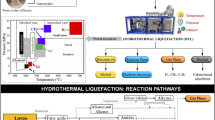Abstract
Cell disruption is an essential pre-treatment for the efficient extraction of many types of intracellular metabolites such as proteins, carbohydrates, DNAs or lipids; but the high process energy requirement becomes an important issue for low valued commodities such as biofuels. Current mechanical cell disruption methods such as high-pressure homogeniser or sonication require energy input in the order of hundreds of MJ kg−1 of the dry mass; in addition, these methods do not have the capacity suitable for biofuel production where daily processing volumes are in order of mega litres. This study investigated hydrodynamic cavitation (HC) as a cell disruption technique, with levels of disruption determined by i) lipids extracted and ii) the chlorophyll released. It was found that for the lipid extraction, HC has a disruption energy requirement of 3 MJ kg−1. This amount of energy requirement is more efficient than sonication by a factor of 10; however, it still represents nearly 13 % of the total energy in the biomass and is too high for the production of biofuels. The cell disruption by HC is essentially periplasmic, i.e. mainly confined to the cell wall and membrane. This result suggests that damage to the outer cell barrier such as the cell wall was sufficient to allow for the diffusion of solvents for lipid extraction.






Similar content being viewed by others
References
Allard B, Rager M-N, Templier J (2002) Occurrence of high molecular weight lipids (C80+) in the trilaminar outer cell walls of some freshwater microalgae. A reappraisal of algaenan structure. Org Geochem 33:789–801
Balasundaram B, Harrison STL (2006) Disruption of Brewers’ yeast by hydrodynamic cavitation: process variables and their influence on selective release. Biotechnol Bioeng 94:303–311
Balasundaram B, Harrison STL (2011) Optimising orifice geometry for selective release of periplasmic products during cell disruption by hydrodynamic cavitation. Biochem Eng J 54:207–209
Balasundaram B, Pandit AB (2001) Selective release of invertase by hydrodynamic cavitation. Biochem Eng J 8:251–256
Barsanti L, Evangelista V, Frassanito AM, Vesentini N, Passarelli V, Gualtieri P (2007) Absorption microspectroscopy, theory and applications in the case of the photosynthetic compartment. Micron 38:197–213
Cabib E, Roh D-H, Schmidt M, Crotti LB, Varma A (2001) The yeast cell wall and septum as paradigms of cell growth and morphogenesis. J Biol Chem 276:19679–19682
Carpita NC (1985) Tensile strength of cell walls of living cells. Plant Physio 79:485–488
Erkelens M, Ball AS, Lewis DM (2014) The influences of the recycle process on the bacterial community in a pilot scale microalgae raceway pond. Biores Tech 157:364–647
Feliu JX, Cubarsi R, Villaverde A (1998) Optimized release of recombinant proteins by ultrasonication of E. coli cells. Biotech Bioeng 58:536–540
Gogate PR, Pandit AB (2000) Engineering design methods for cavitation reactors II: hydrodynamic cavitation. AICHE J 46:1641–1649
Gogate PR, Pandit AB (2005) A review and assessment of hydrodynamic cavitation as a technology for the future. Ultrason Sonochem 12:21–27
Guillard RRL, Ryther JH (1962) Studies of marine planktonic diatoms: 1. Cyclotella nana Hustedt and Detonula confervacea (Cleve) Gran. Can J Microbiol 8:229–239
Halim R, Harun R, Danquah MK, Webley PA (2012) Microalgal cell disruption for biofuel development. Appl Energy 91:116–121
Jyoti KK, Pandit AB (2001) Water disinfection by acoustic and hydrodynamic cavitation. Biochem Eng J 7:201–212
Kanthale PM, Gogate PR, Pandit AB, Marie Wilhelm A (2003) Cavity cluster approach for quantification of cavitational intensity in sonochemical reactors. Ultrasonics Sonochem 10:181–189
Keris-Sen UD, Sen U, Soydemir G, Gurol MD (2014) An investigation of ultrasound effect on microalgal cell integrity and lipid extraction efficiency. Biorces Tech 152:407–413
Kuboi R, Umakoshi H, Takagi N, Komasawa I (1995) Optimal disruption methods for the selective recovery of β-galactosidase from Escherichia coli. J Ferm Bioeng 79:335–341
Lee AK, Lewis DM, Ashman PJ (2010a) Energy requirements and economic analysis of a full-scale microbial flocculation system for microalgal harvesting. Chem Eng Res Design 88:988–996
Lee AK, Lewis DM, Ashman PJ (2012) Disruption of microalgal cells for the extraction of lipids for biofuels: processes and specific energy requirements. Biomass Bioenergy 46:89–101
Lee AK, Lewis DM, Ashman PJ (2013) Force and energy requirement for microalgal cell disruption: an atomic force microscope evaluation. Biores Tech 128:199–206
Lee JY, Yoo C, Jun SY, Ahn CY, Oh HM (2010b) Comparison of several methods for effective lipid extraction from microalgae. Bioresour Tech 101 (Supplement 1):S75-S77.
Middelberg APJ (1995) Process-scale disruption of microorganisms. Biotech Adv 13:491–551
Moheimani N, Borowitzka M (2006) The long-term culture of the coccolithophore Pleurochrysis carterae (Haptophyta) in outdoor raceway ponds. J Appl Phycol 18:703–712
Moholkar VS, Pandit AB (2001) Modeling of hydrodynamic cavitation reactors: a unified approach. Chem Eng Sc 56:6295–6302
Olmstead ILD, Hill DRA, Dias DA, Jayasinghe NS, Callahan DL, Kentish SE, Scales PJ, Martin GJO (2013) A quantitative analysis of microalgal lipids for optimization of biodiesel and omega-3 production. Biotech Bioenergy 110:2096–2104
Palmquist D, Jenkins T (2003) Challenges with fats and fatty acid methods. J Anim Sci 81:3250–3254
Samarasinghe N, Fernando S, Lacey R, Faulkner WB (2012) Algal cell rupture using high pressure homogenization as a prelude to oil extraction. Renew Energy 48:300–308
Save SS, Pandit AB, Joshi JB (1997) Use of hydrodynamic cavitation for large scale microbial cell disruption. Food Bioprod Pro 75:41–49
Shah Y, Moholkar V, Pandit A (1999) Cavitation reaction engineering. The Plenum Chemical Engineering Series. Kluwer, Dordrecht
Sharma A, Gogate PR, Mahulkar A, Pandit AB (2008) Modeling of hydrodynamic cavitation reactors based on orifice plates considering hydrodynamics and chemical reactions occurring in bubble. Chem Eng J 143:201–209
Sukhija PS, Palmquist DL (1988) Rapid method for determination of total fatty acid content and composition of feedstuffs and feces. J Agr Food Chem 36:1202–1206
Tomita Y, Shima A (1986) Mechanisms of impulsive pressure generation and damage pit formation by bubble collapse. J Fluid Mech 169:535–564
Vogel A, Lauterborn W (1988) Acoustic transient generation by laser-produced cavitation bubbles near solid boundaries. J Acoust Soc Am 84:719–731
Ward AJ, Kumar MS (2010) Bio-conversion rate and optimum harvest intervals for Moina australiensis using digested piggery effluent and Chlorella vulgaris as a food source. Bioresour Tech 101:2210–2216
Yan Y, Thorpe R (1990) Flow regime transitions due to cavitation in the flow through an orifice. Int J Multiphase Flow 16:1023–1045
Yu P-W, Ceccio SL, Tryggvason G (1995) The collapse of a cavitation bubble in shear flows—a numerical study. Phys Fluid 7:2608–2616
Acknowledgments
This project received funding from the Australian Government as part of the Asia-Pacific Partnership (APP) on Clean Development and Climate (Project number: RD-07-26). The views expressed herein are not necessarily the views of the Commonwealth, and the Commonwealth does not accept responsibility for any information or advice contained herein.
The authors would also like to thank Prof. M.A. Borowitzka from Murdoch University, Western Australia, for his overall co-ordination of the APP project and acknowledge the permission granted by Muradel Pty Ltd for the publication of this study.
Author information
Authors and Affiliations
Corresponding author
Rights and permissions
About this article
Cite this article
Lee, A.K., Lewis, D.M. & Ashman, P.J. Microalgal cell disruption by hydrodynamic cavitation for the production of biofuels. J Appl Phycol 27, 1881–1889 (2015). https://doi.org/10.1007/s10811-014-0483-3
Received:
Revised:
Accepted:
Published:
Issue Date:
DOI: https://doi.org/10.1007/s10811-014-0483-3




